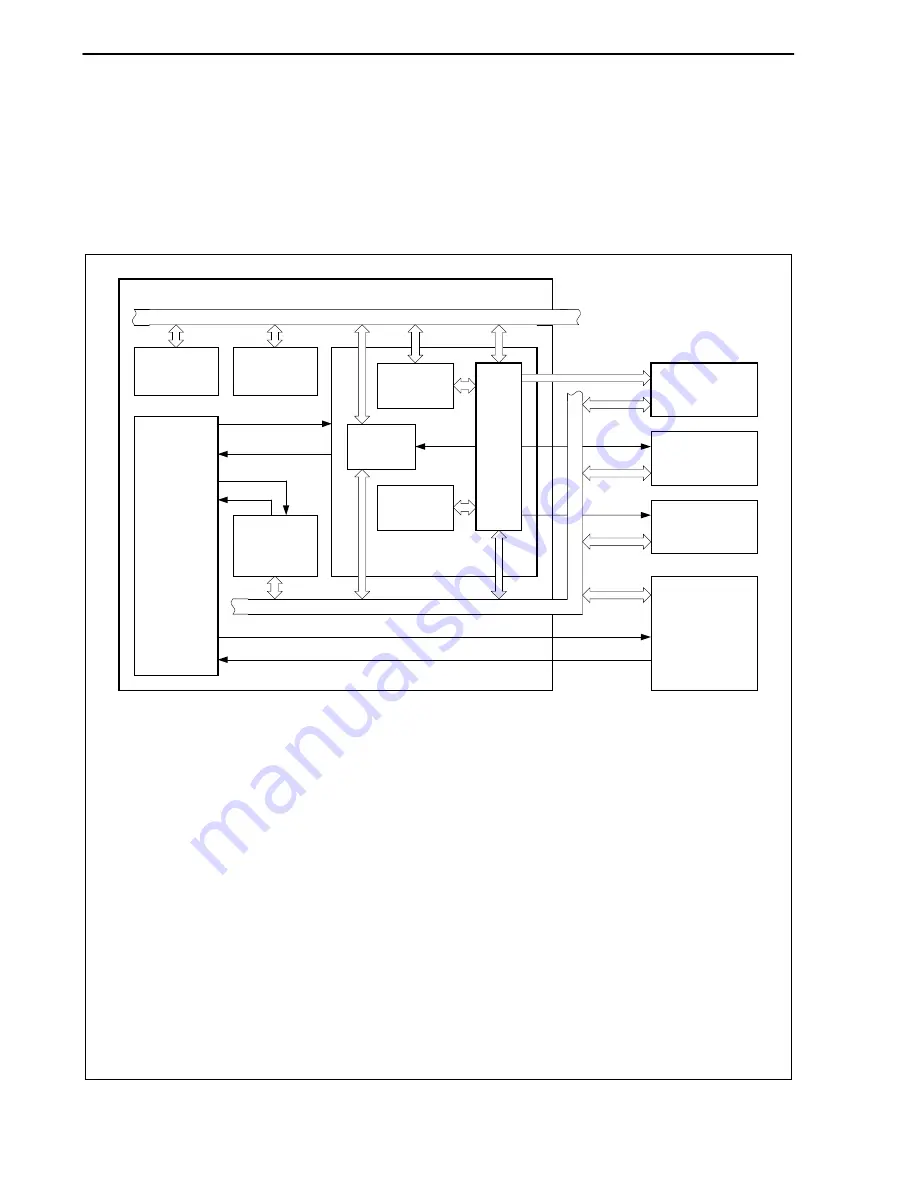
CHAPTER 4 BCU
Preliminary User’s Manual A14874EJ3V0UM
94
4.9 Data Transfer Using VSB
4.9.1 Data transfer example
This section uses the circuit shown in Figure 4-13 to explain the procedure for transferring data between bus
masters and bus slaves connected to the VSB.
Figure 4-13. Example of Data Transfer Using VSB
INTC
STBC
CPU
VDSELPZ
VAACK
VAREQ
VAREQ0
VAACK0
VAACK2
<1>
<2>
VSB
NPB
VDCSZ5 to
VDCSZ0
NU85E
<4>
<3>
Bus arbiter
NU85E interior
(Bus master 2)
DMAC
BBR
VDCSZ7
User logic 1
(Bus slave 2)
BCU
Memory controller
(MEMC)
(Bus slave 0)
User logic 0
(Bus slave 1)
VDCSZ6
External circuit
(Bus master 1)
TIC
(Bus master 0)
LOCK
<1> The NU85E grants bus control (bus access right) to only one bus master according to the on-chip bus
arbiter (Refer to
4.9.5 Bus master transition
for detail). The bus arbiter arbitrates the bus access right
according to the following prioritization.
TIC (bus master 0) > External circuit (bus master 1) > NU85E interior (bus master 2)
For example, if a bus access right request (VAREQ) is generated from the TIC or an external circuit when
the NU85E interior is operating as the bus master, the NU85E interior releases the bus.
In the figure shown above, the NU85E interior (bus master 2) receives an acknowledge signal (VAACK2:
internal signal) from the bus arbiter and has the bus access right (A bus access right request signal is
always being output from the NU85E interior to the bus arbiter).
<2> Bus master 2, which has the bus access right, begins the data transfer to the VSB.
<3> The BCU selects the bus slave by generating a chip select signal (VDCSZn) corresponding to each bank
of the data area according to the programmable chip select function (n = 7 to 0). In the figure shown
above, MEMC (bus slave 0) is selected by the VDCSZ5 to VDCSZ0 signals.
<4> The selected bus slave 0 returns a transfer response to bus master 2, and the data transfer begins.
















































